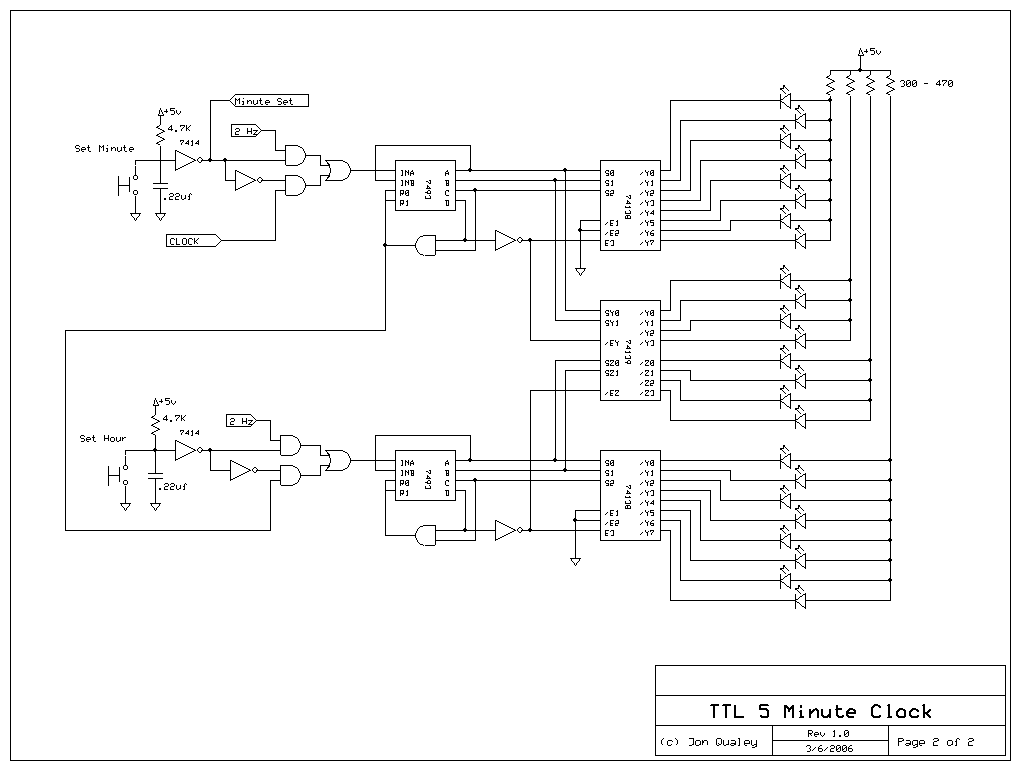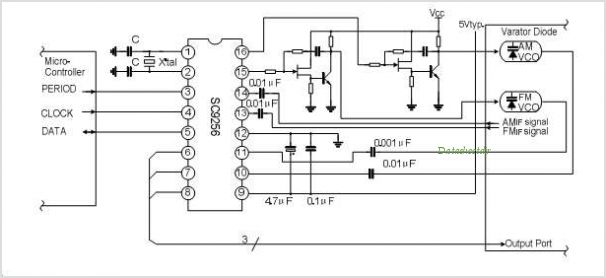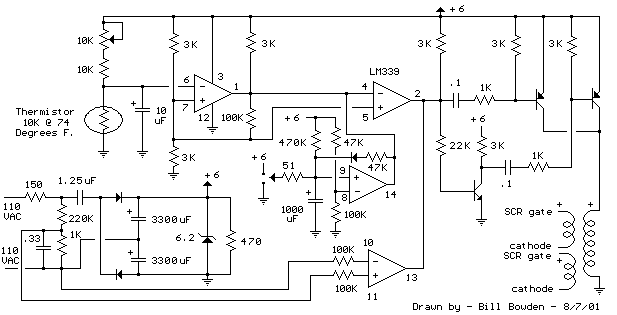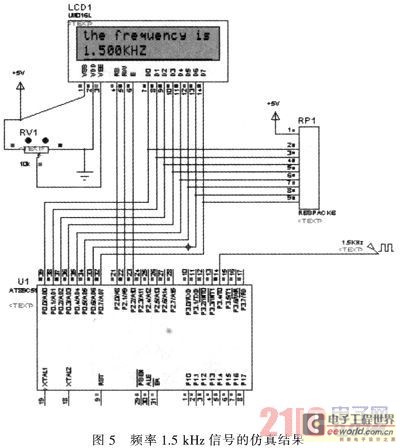
5 Minute Digital Clock

The clock displays time in 5-minute intervals, with adjustable hour and minute settings. There is no alarm feature or AM/PM indicator. The clock face is constructed from two pieces of linoleum glued together for added thickness, though floor tiles could also serve this purpose. The numerals are inexpensive adhesive characters purchased from a hardware store, intended for mailbox use. LEDs are affixed to the back of the clock face. For a more elaborate design, a brass or wooden clock face can be created, complemented by a wooden cabinet resembling a "grandfather" clock. It is important to note that the schematics feature TTL devices represented as 7400 series, which are generic part numbers. During construction, it is recommended to use 74LS, 74ALS, or 74HCT devices due to their low power consumption and availability. The power supply is not illustrated in the schematics; however, a simple regulated 5V supply rated between 500mA to 1A is sufficient. A 7.5V, 600mA power transformer, a full-wave rectifier, and a 220µF capacitor are utilized for filtering. Regulation is achieved with an LM340-5, although a 7805 could also be used. The full-wave rectifier is a TO-220 package salvaged from a switching power supply. The oscillator circuit employs an LM311 comparator paired with a 32,768Hz tuning fork clock resonator. A 10pF trimmer capacitor is tuned using a 6-digit frequency counter with a resolution of 1Hz; if unavailable, a fixed capacitor of 5 to 7pF can be used. The LM311 was chosen for its common availability and cost-effectiveness, although superior time base ICs may exist. The 32,768Hz signal is divided by 16,384 to produce a 2Hz signal using a 74HCT4020 counter, which is further divided by 12 using a 7492, and subsequently by 5 and 10 using 7490 counters, generating a signal that cycles every five minutes. Counters reset when the minute is adjusted to ensure the clock begins at the start of a 5-minute cycle, making it essential to set the clock accurately at true 5-minute intervals. The second schematic illustrates the circuitry for 5-minute intervals and hour counting. The cluster of gates near the minute set button toggles between the 5-minute signal and the 2Hz signal, allowing the clock to advance at a rate of 2Hz while the set button is pressed. The 7493 counter is configured to reset at the 13th count (12). The C and D bits are sent to an AND gate, resetting the counter at 12 and advancing to the next 7493 counter stage for hours. The second counter stage operates similarly, resetting at the 13th count. The setting circuitry employs the same gate circuit to switch between the 1-hour signal and the 2Hz signal for hour adjustments. An inverter is connected to the D output of the counters and linked to the 74138 and 74139 decoders, enabling the 74138 to decode counts 0 through 7 while the 74139 remains disabled. For counts 8 through 11, the 74138 is disabled, and the 74139 is enabled, allowing full 1-of-12 decoding for each hour and 5-minute interval. Although a 74154 could have been used for this decoding and counter resetting, the 74138 and 74139 were selected for their common availability. The outputs of the decoders drive the LEDs directly, with active low outputs (inverted), necessitating the LEDs to be connected to a positive supply. The resistor values for the LEDs depend on the specific LED used; however, it is advised not to go below 300 ohms to avoid stressing the decoder chips. For high-current LEDs, driver ICs or discrete transistor drivers may be employed. Construction techniques utilized include wire wrap connections with machine pin sockets rather than traditional wire wrap methods.
The clock circuit is designed to provide a simple yet effective timekeeping solution, leveraging common electronic components to achieve a reliable performance. The choice of the 32,768Hz tuning fork resonator is particularly important, as it serves as the basis for accurate timekeeping. This frequency is standard in digital clocks, allowing for precise division down to the required intervals. The use of counters such as the 7490 and 7492 facilitates easy manipulation of time intervals, ensuring that the clock can be set accurately to the nearest five minutes.
The implementation of the LM311 comparator as an oscillator offers flexibility in adjusting the time base, while the use of trimmer capacitors allows for fine-tuning, which is critical in achieving the desired accuracy. The design also includes provisions for user interaction through the minute and hour set buttons, enabling straightforward adjustments. The integration of the 74138 and 74139 decoders allows for a clear visual representation of time, with the LEDs providing a simple yet effective means of displaying the current hour and minute intervals. Overall, the circuit exemplifies a practical and educational approach to clock design, suitable for both hobbyists and those seeking to understand the fundamentals of digital timekeeping systems.The clock shows time in 5 minute intervals. The hour and minute can be set. There is no alarm or any AM/PM indicator. For the clock face I used a 2 pieces of lenolium glued together to increase thickness. (A couple of floor tiles would work as well. ) The numerals are just inexpensive adhesive characters I purchased at a hardware store meant for us e on mail boxes. The LEDs are glued to the clock face from behind. If you wanted to get fancy, a nice brass or wooden clock face can be made along with a wooden cabinet like a "grandfather" style clock. NOTE : In the following schematics, TTL devices are shown as 7400 series. These are used as generic 7400 series part numbers. During construction, 74LS, 74ALS or 74HCT should be used because of the low power requirements and availability.
(I know most of you know this already. ) The power supply is not shown in the schematics. A simple 5 volt regulated supply of 500mA to 1A will work well. I used a 7. 5V, 600 mA power transformer, a full wave rectifier and a 220 uf capacitor as a filter. Regulation is done with a LM340-5 - a 7805 would work just as well. For the full wave rectifier, I used a rectifier set in a TO-220 package that I salvaged from a switching power supply. The oscillator is a LM311 comparator along with a 32768Hz tuning fork type clock resonator. The 10pf trim cap is adjusted using a 6 digit frequency counter with the resolution of 1Hz. If you don`t have a 6 digit frequency counter, a fixed capacitor of 5 to 7 pf should get you close. I chose the LM311 circuit because the 311 is commonly available and inexpensive. There probably are better time base ICs available. The 32768Hz signal is divided by 16384 to get a 2Hz signal. This is done with a 74HCT4020 counter. The 2Hz signal is then divided by 12 with a 7492, then divided by 5 and 10 with 7490s. This gives a signal of one cycle per five minutes. The counters are reset when the minute is set. This is so that when the minute is set, the clock starts at the begining of a 5 minute cycle. For this reason it is important to set the clock upon true 5 minute intervals. The second schematic shows the 5 minute interval and 1 hour counting circuitry. The cluster of gates near the minute set button switches between the 5 minute signal and the 2Hz signal.
This way, the clock advances at a rate of 2Hz when the set button is held down. The 7493 is setup to reset at the 13th count (12). The C and D bits are sent to an AND gate which reset the counter at 12 and clock the next 7493 counter stage. The next counter stage being for hours. The second counter stage works just like the first one, reseting on the 13th count. The set circuitry uses the same gate circuit to switch between the 1 hour signal and the 2Hz signal which is used for setting the hour.
An inverter is connected to the D output of the counters and connected to the 74138 and 74139 decoders. This is done so that the 74138 decodes counts 0 through 7 while the 74139 is disabled. For counts of 8 through 11, the 74138 is disabled while the 74139 is enabled. This way, a full 1 of 12 decoding can be done to represent each hour and each 5 minute interval. This decoding circuit could have been done with a 74154. In fact, the 74154 could have also been used to reset the counters. I chose the `138 and `139 design because the `138 and `139 are commonly available while the `154 can be difficult to obtain these days.
The 74138 and 74139 decoders drive the LEDs directly. The outputs are active low (inverted) so the LEDs are tied to positive. The decoders are not designed to drive LEDs this way but they do. The resistor values for the LEDs will depend on the LED but I don`t advise going below 300 Ohms because this will stress the decoder chips. For high current LEDs, driver ICs or descrete transistor drivers may be used. Note about construction : I used wire wrap connection techniques with machine pin sockets, not wire wrap so
🔗 External reference
The clock circuit is designed to provide a simple yet effective timekeeping solution, leveraging common electronic components to achieve a reliable performance. The choice of the 32,768Hz tuning fork resonator is particularly important, as it serves as the basis for accurate timekeeping. This frequency is standard in digital clocks, allowing for precise division down to the required intervals. The use of counters such as the 7490 and 7492 facilitates easy manipulation of time intervals, ensuring that the clock can be set accurately to the nearest five minutes.
The implementation of the LM311 comparator as an oscillator offers flexibility in adjusting the time base, while the use of trimmer capacitors allows for fine-tuning, which is critical in achieving the desired accuracy. The design also includes provisions for user interaction through the minute and hour set buttons, enabling straightforward adjustments. The integration of the 74138 and 74139 decoders allows for a clear visual representation of time, with the LEDs providing a simple yet effective means of displaying the current hour and minute intervals. Overall, the circuit exemplifies a practical and educational approach to clock design, suitable for both hobbyists and those seeking to understand the fundamentals of digital timekeeping systems.The clock shows time in 5 minute intervals. The hour and minute can be set. There is no alarm or any AM/PM indicator. For the clock face I used a 2 pieces of lenolium glued together to increase thickness. (A couple of floor tiles would work as well. ) The numerals are just inexpensive adhesive characters I purchased at a hardware store meant for us e on mail boxes. The LEDs are glued to the clock face from behind. If you wanted to get fancy, a nice brass or wooden clock face can be made along with a wooden cabinet like a "grandfather" style clock. NOTE : In the following schematics, TTL devices are shown as 7400 series. These are used as generic 7400 series part numbers. During construction, 74LS, 74ALS or 74HCT should be used because of the low power requirements and availability.
(I know most of you know this already. ) The power supply is not shown in the schematics. A simple 5 volt regulated supply of 500mA to 1A will work well. I used a 7. 5V, 600 mA power transformer, a full wave rectifier and a 220 uf capacitor as a filter. Regulation is done with a LM340-5 - a 7805 would work just as well. For the full wave rectifier, I used a rectifier set in a TO-220 package that I salvaged from a switching power supply. The oscillator is a LM311 comparator along with a 32768Hz tuning fork type clock resonator. The 10pf trim cap is adjusted using a 6 digit frequency counter with the resolution of 1Hz. If you don`t have a 6 digit frequency counter, a fixed capacitor of 5 to 7 pf should get you close. I chose the LM311 circuit because the 311 is commonly available and inexpensive. There probably are better time base ICs available. The 32768Hz signal is divided by 16384 to get a 2Hz signal. This is done with a 74HCT4020 counter. The 2Hz signal is then divided by 12 with a 7492, then divided by 5 and 10 with 7490s. This gives a signal of one cycle per five minutes. The counters are reset when the minute is set. This is so that when the minute is set, the clock starts at the begining of a 5 minute cycle. For this reason it is important to set the clock upon true 5 minute intervals. The second schematic shows the 5 minute interval and 1 hour counting circuitry. The cluster of gates near the minute set button switches between the 5 minute signal and the 2Hz signal.
This way, the clock advances at a rate of 2Hz when the set button is held down. The 7493 is setup to reset at the 13th count (12). The C and D bits are sent to an AND gate which reset the counter at 12 and clock the next 7493 counter stage. The next counter stage being for hours. The second counter stage works just like the first one, reseting on the 13th count. The set circuitry uses the same gate circuit to switch between the 1 hour signal and the 2Hz signal which is used for setting the hour.
An inverter is connected to the D output of the counters and connected to the 74138 and 74139 decoders. This is done so that the 74138 decodes counts 0 through 7 while the 74139 is disabled. For counts of 8 through 11, the 74138 is disabled while the 74139 is enabled. This way, a full 1 of 12 decoding can be done to represent each hour and each 5 minute interval. This decoding circuit could have been done with a 74154. In fact, the 74154 could have also been used to reset the counters. I chose the `138 and `139 design because the `138 and `139 are commonly available while the `154 can be difficult to obtain these days.
The 74138 and 74139 decoders drive the LEDs directly. The outputs are active low (inverted) so the LEDs are tied to positive. The decoders are not designed to drive LEDs this way but they do. The resistor values for the LEDs will depend on the LED but I don`t advise going below 300 Ohms because this will stress the decoder chips. For high current LEDs, driver ICs or descrete transistor drivers may be used. Note about construction : I used wire wrap connection techniques with machine pin sockets, not wire wrap so
🔗 External reference





